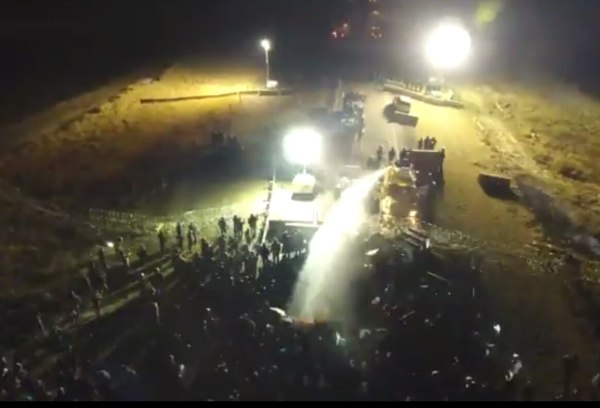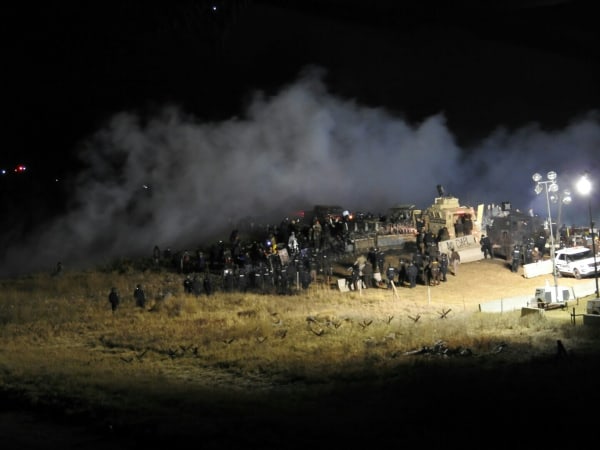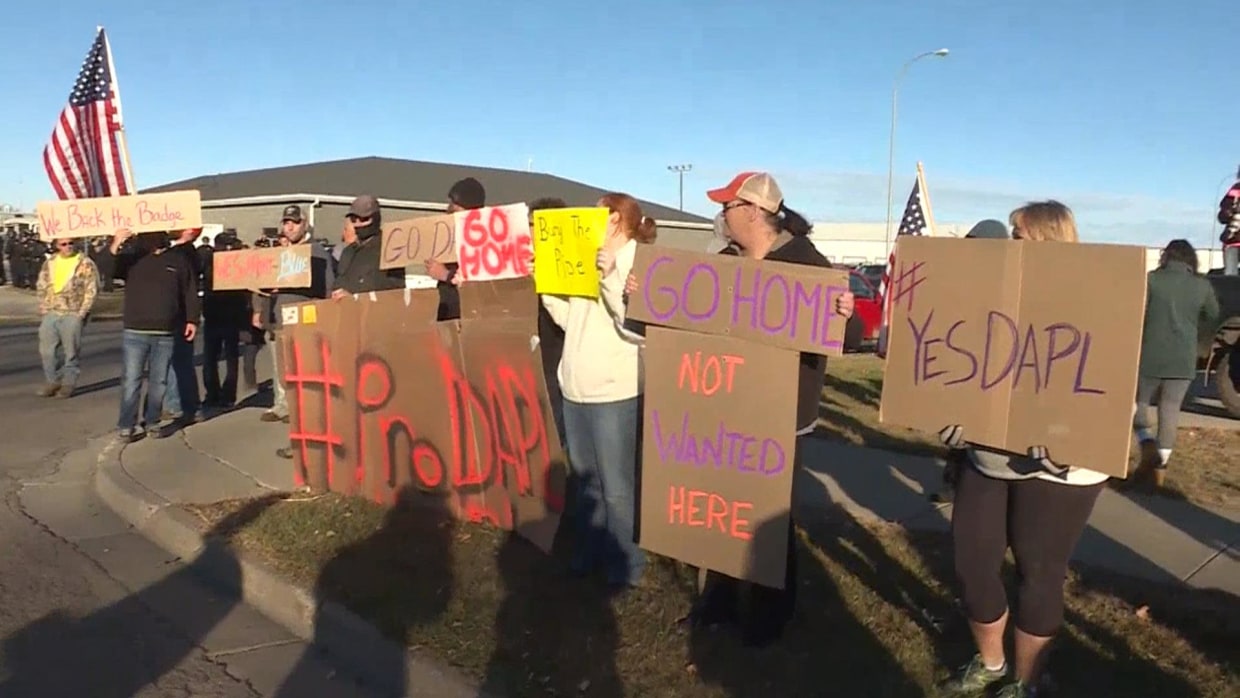DAKOTA PIPELINE: PROTESTERS SOAKED WITH WATER IN FREEZING TEMPERATURES
Tear gas, freezing cold water and rubber bullets were used to disperse a crowd of 400 protesters at the Dakota Access Pipeline in clashes late Sunday and early Monday that left more than 150 activists and one law enforcement officer injured.
Linda Black Elk, a member of the Standing Rock Medic and Healer Council of the Catawba tribe, said she treated protesters for injuries and hypothermia and they were soaked by water in temperatures as low as 23 degrees.
PHOTOS: Pipeline Protesters Drenched With Water Cannon
“Last night was a really critical life or death situation,” she told NBC News Monday. “There were hundreds of people out on the frontlines. People were first soaked down with tear gas and then sprayed with a bunch of water.”
Protestors say that the clashes began when they tried to remove a roadblock on a bridge north of their Oceti Sakowin “Water Protector” Camp. The roadblock, composed in part of burned-out trucks, has blocked the main route to the city of Bismarck since late October.
“The negotiation from law enforcement stated that they were going to remove them for their emergency services to get through … to Bismarck. It’s been 2.5 weeks, maybe 3, and they still haven’t kept their word on that,” said E’sha Hoferer,who live-streamed the clashes on Facebook.
Black Elk said the roadblock was an inconvenience and posed a risk for emergency personnel trying to access the protest camp.

She said more than 150 protesters had been injured. “There is a gentlemen who was hit with a rubber bullet in his head. There were rubber bullets flying everywhere in a crowd that was already blinded by tear gas.”
Police used “concussions grenades, rubber bullets, tear gas, water cannons,” she said, “and then they fired up the [Long-Range Acoustic Device] but as far as I know, it was never used.”
Sheriff’s spokesman Rob Keller told NBC News that no water cannon were deployed and that water was sprayed from a fire truck to control fires as they were being set by activists. However, video posted to Facebook by activists clearly showed authorities spray a continuous stream of water over demonstrators in areas where there were no fires.
A law enforcement officer was hit on the head by a thrown rock during the confrontation, Morton County Sheriff’s Office said in an update at 1 a.m. local time (2 a.m. ET).
In an earlier release, the sheriff’s office described the clashes as “an ongoing riot on the Backwater Bridge, north of a protest camp” and said protesters’ actions were “very aggressive.”
Hoferer said he was hit with tear-gas and sprayed with water and that demonstrators were lighting fires to provide warmth.
“They’re saying that we’re causing multiple fires out here, but we’re really only using them to stay warm,” said Hoferer, 27. “I’m just a father with a phone that loves his water, that wants his water to be clean for his children and grandchildren.”
The bridge had been closed since late October, when it was damaged in a fire after authorities evicted protesters from property owned by the pipeline developer.
In an account posted on Facebook, Indigenous Environmental Network organizer Dallas Goldtooth said “water protectors” removed the vehicle to gain access to North Dakota Highway 1806.
“It was to open up the road so in the daylight the world can see the face of militarized law enforcement and state oppression,” Goldtooth wrote. “Police in response are using a water cannon, tear gas and concussion grenades on the crowd!!”
Related: What Will a Trump Presidency Mean for the Dakota Access Pipeline?
By 8:30 p.m., the sheriff’s office said, one person had been arrested.

The clash comes days after organizers held coordinated demonstrations across the country to protest a 1,170-mile oil pipeline that has generated the largest American Indian protest movement in modern history. Thousands of people have flocked to North Dakota, where the Standing Rock Sioux Tribe argues that the proposed pipeline could permanently contaminate its water source, the Missouri River, as well as desecrate sacred sites.
Energy Transfer Partners, which is behind the pipeline, has said that it has taken measures to prevent such leaks and that the pipeline is far safer than transporting oil with trucks or trains.









Follow Us!